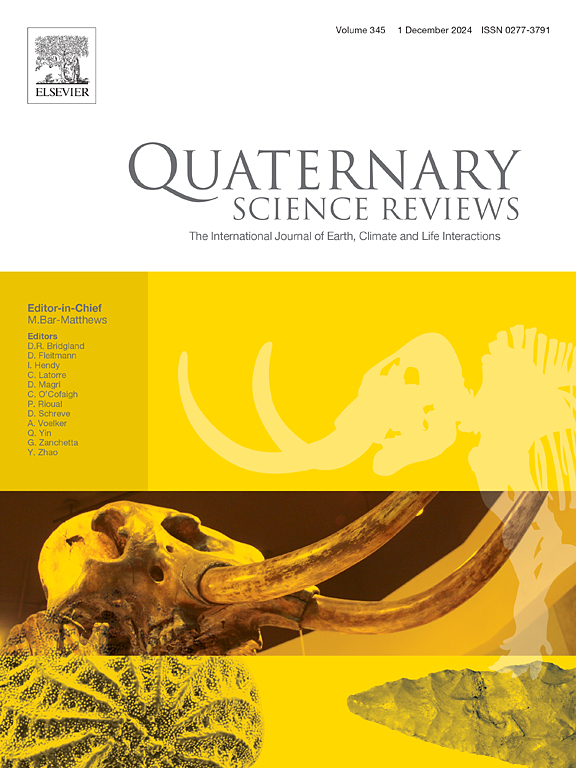Rice farming mediated internal competition and reduced external risks during the Neolithic period
IF 3.2
1区 地球科学
Q1 GEOGRAPHY, PHYSICAL
引用次数: 0
Abstract
Rice cultivation and domestication are among the most transformative processes in human history, yet the internal driving forces behind these developments remain unclear. To address this, we integrated archaeological and palaeo-environmental data to develop a quantitative land-use model using an agent-based model (ABM). This model simulates human behavior and settlement development in the Yaojiang Valley on the east coast of China, a key region of the Neolithic Hemudu Culture with prolonged history of rice cultivation and domestication. We tested two scenarios: one with rice farming and one without. The results revealed that as population and settlements expanded, competition for resources intensified in both scenarios, leading to significant overlap in heavily utilized areas. However, rice cultivation provided additional and stable food sources, reduced the frequency, distance and risk associated with resource gathering, which in turn minimized competition among settlements and provided a strategic advantage for community survival. This strategy likely contributed to the emergence of smaller and more numerous settlements practicing rice farming during the late Hemudu period. Our research findings suggest that rice farming was adopted as a strategy to mitigate intra-settlement competition, underscoring the value of agent-based model in analyzing complex social-cultural dynamics.
在新石器时代,水稻种植调节了内部竞争,减少了外部风险
水稻种植和驯化是人类历史上最具变革性的过程之一,但这些发展背后的内在驱动力尚不清楚。为了解决这个问题,我们将考古和古环境数据结合起来,使用基于主体的模型(ABM)开发了一个定量的土地利用模型。该模型模拟了中国东部沿海耀江流域的人类行为和聚落发展,耀江流域是新石器时代河姆渡文化的重要区域,具有悠久的水稻种植和驯化历史。我们测试了两种场景:一种是种植水稻,另一种是不种植水稻。结果显示,随着人口和住区的扩大,两种情况下对资源的竞争加剧,导致在大量利用的地区出现严重重叠。然而,水稻种植提供了额外和稳定的食物来源,减少了与资源收集相关的频率、距离和风险,从而最大限度地减少了定居点之间的竞争,为社区生存提供了战略优势。这一策略很可能促成了河姆渡后期出现的规模更小、数量更多的水稻种植定居点。我们的研究结果表明,水稻种植是缓解聚落内竞争的一种策略,强调了基于agent的模型在分析复杂社会文化动态中的价值。
本文章由计算机程序翻译,如有差异,请以英文原文为准。
求助全文
约1分钟内获得全文
求助全文
来源期刊

Quaternary Science Reviews
地学-地球科学综合
CiteScore
7.50
自引率
15.00%
发文量
388
审稿时长
3 months
期刊介绍:
Quaternary Science Reviews caters for all aspects of Quaternary science, and includes, for example, geology, geomorphology, geography, archaeology, soil science, palaeobotany, palaeontology, palaeoclimatology and the full range of applicable dating methods. The dividing line between what constitutes the review paper and one which contains new original data is not easy to establish, so QSR also publishes papers with new data especially if these perform a review function. All the Quaternary sciences are changing rapidly and subject to re-evaluation as the pace of discovery quickens; thus the diverse but comprehensive role of Quaternary Science Reviews keeps readers abreast of the wider issues relating to new developments in the field.
 求助内容:
求助内容: 应助结果提醒方式:
应助结果提醒方式:


